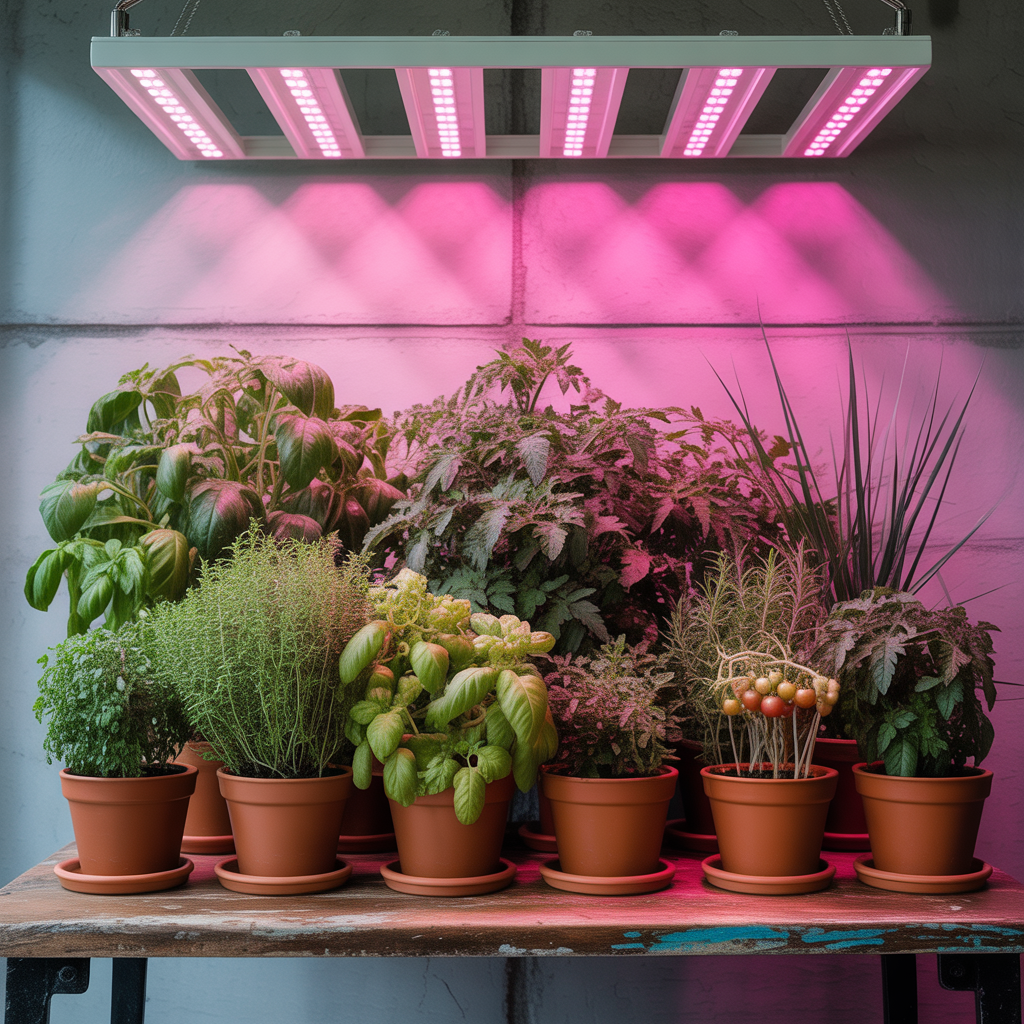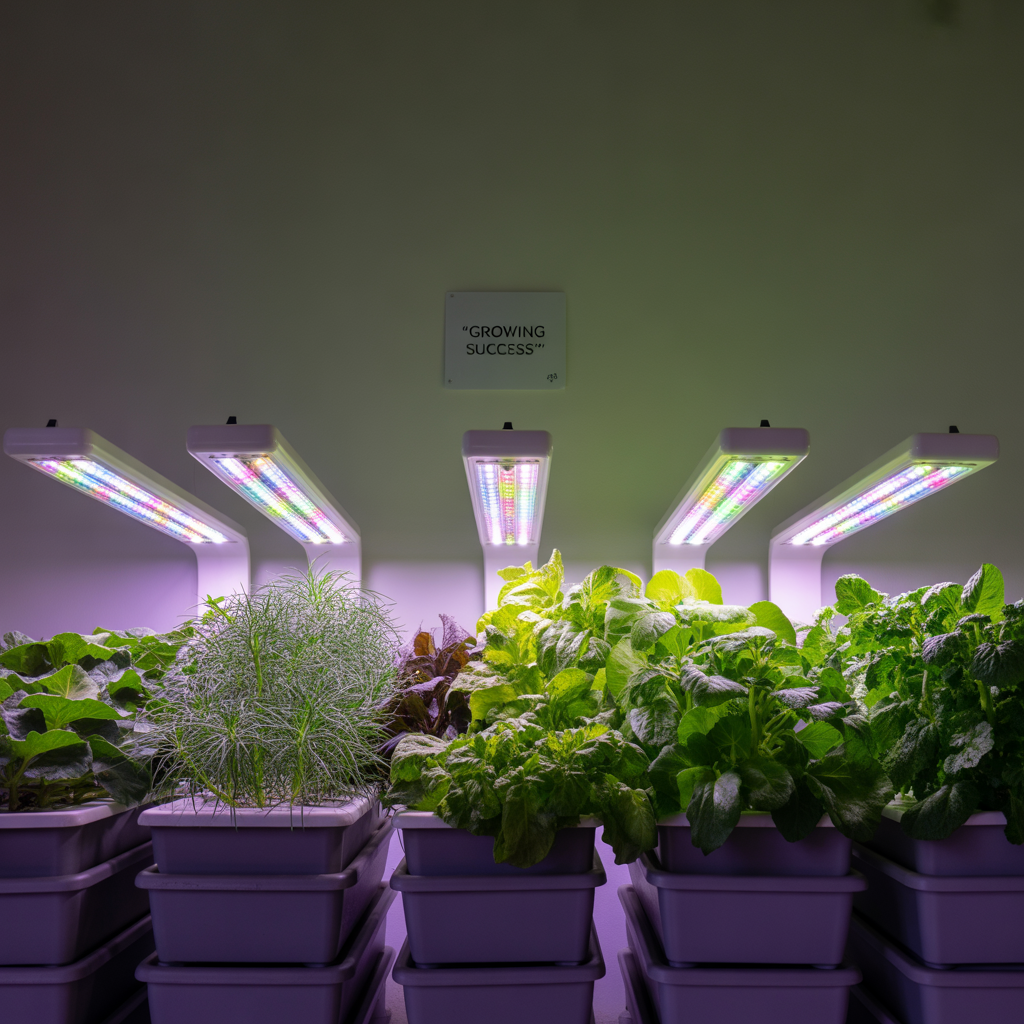Do LED grow lights work? Do They Actually Work? A Comprehensive Guide
Growing plants indoors has become increasingly popular, and a crucial component of successful indoor gardening is the use of artificial light sources. Many growers are turning to LED grow lights, but the question remains: Do LED grow lights work? This comprehensive guide will delve into the science behind LED grow lights, their effectiveness, various types…
Growing plants indoors has become increasingly popular, and a crucial component of successful indoor gardening is the use of artificial light sources. Many growers are turning to LED grow lights, but the question remains: Do LED grow lights work? This comprehensive guide will delve into the science behind LED grow lights, their effectiveness, various types available, and much more, ensuring you have all the information needed to make an informed decision. You’ll learn about spectrum, light intensity, and how to choose the right LED grow light for your needs, whether you’re a seasoned horticulturalist or just starting your indoor gardening journey.
Yes, LED grow lights work effectively for plant growth. They provide the specific light spectrum plants need for photosynthesis, are energy-efficient, produce less heat, and last longer than traditional lights. They’re widely used for indoor gardening, hydroponics, and greenhouses, supporting all growth stages from seedling to harvest.
LED grow lights use light-emitting diodes to produce light specifically designed for plant growth. Unlike traditional high-pressure sodium (HPS) or metal halide (MH) lights, LEDs produce light with very little heat, making them energy-efficient and safer for indoor environments. They are also much longer-lasting than their predecessors.
Do LED Grow Lights Work?
How LED Grow Lights Work: The Science Behind Photosynthesis

Plants utilize light energy during photosynthesis, converting light, water, and carbon dioxide into energy and oxygen. LED grow lights mimic the natural sunlight spectrum, providing the wavelengths of light (red and blue primarily) essential for plant growth and flowering. This careful manipulation of light wavelengths allows for optimized photosynthesis. Different wavelengths of light affect different stages of plant growth.
Read More: 15 Creative Exposed Ceiling Lighting Ideas | Don’t Miss
Types of LED Grow Lights
Full-Spectrum LED Grow Lights
These lights offer a broader spectrum of wavelengths, closely mimicking sunlight and suitable for all growth stages of various plants. They generally provide a balanced mix of red, blue, and other wavelengths.
Red and Blue LED Grow Lights
These lights focus on the red and blue wavelengths most crucial for photosynthesis, maximizing efficiency for vegetative growth and flowering. They are often more affordable than full-spectrum options.
UV and Far-Red LED Grow Lights
Adding UV and far-red light can enhance plant growth and development further, impacting things like resin production in cannabis cultivation or improving the overall health and yield of other plants. This is a more advanced approach.
Read More: Can You Throw Away LED Light Bulbs? Know The Truth
Benefits of Using LED Grow Lights

Energy Efficiency
LED grow lights consume significantly less energy than traditional grow lights, resulting in lower electricity bills. This energy savings is a significant advantage, particularly for large-scale operations.
Longer Lifespan
LEDs have a much longer lifespan than other light sources, reducing the frequency of replacement and associated costs. A good quality LED grow light can last for several years.
Reduced Heat Output
The low heat output of LEDs helps maintain a stable temperature in your grow area, reducing the need for expensive cooling systems. This is crucial for preventing plant stress.
Limitations of LED Grow Lights
Initial Investment Cost
While LED grow lights are energy-efficient in the long run, the initial investment can be higher compared to traditional grow lights.
Light Intensity and Coverage
It’s crucial to select LED grow lights with sufficient light intensity (measured in PPFD or photosynthetic photon flux density) and adequate coverage area for your plants’ needs. Incorrect selection can hinder growth.
Potential for Light Burn
While LEDs produce less heat, placing them too close to plants can still cause light burn. Maintaining the appropriate distance is crucial for optimal results.
Choosing the Right LED Grow Light
Understanding PPFD (Photosynthetic Photon Flux Density)
PPFD measures the number of photosynthetically active photons reaching a surface area per second. Higher PPFD values generally lead to better plant growth. Consider the PPFD requirement of the specific plants you want to grow.
Light Spectrum and Plant Stages
The ideal light spectrum varies depending on the plant’s growth stage. Some grow lights offer adjustable spectra to cater to different phases, from seedling to flowering.
Coverage Area and Plant Spacing
Ensure your chosen LED grow light can adequately cover the area where your plants will be growing. This might involve multiple lights or careful arrangement of the lights.
Setting Up and Using LED Grow Lights
Placement and Mounting
Proper placement is essential for even light distribution. Use appropriate mounting hardware and adjust height to optimize light penetration.
Light Cycles and Timing
Plants require specific light cycles for optimal growth. The photoperiod (light/dark cycle) should be appropriately programmed, with adjustment during various growth stages.
Maintenance and Cleaning
Regular cleaning of the LED grow lights’ lenses is important to maintain optimal light output. Accumulated dust and dirt can significantly reduce light intensity.
Comparing LED Grow Lights to Other Grow Lights
LED vs. HPS (High-Pressure Sodium)
LEDs are more energy-efficient and have a longer lifespan than HPS lights, but the initial investment is higher. HPS lights often provide a higher PPFD, but generate significantly more heat.
LED vs. MH (Metal Halide)
Similar to HPS, MH lights are less energy-efficient and have a shorter lifespan than LEDs. They also generate more heat and require more robust cooling systems.
Troubleshooting Common LED Grow Light Issues
Low Yield or Poor Growth
Issues such as insufficient light intensity, incorrect light spectrum, improper plant spacing, or nutrient deficiencies can cause poor growth. Carefully assess each factor.
Light Burn
Place the lights at the appropriate distance from the plants. Too close proximity can cause light burn, leading to bleached or scorched leaves.
Flickering Lights
Flickering lights can indicate electrical issues or problems with the driver. Check the connections and wiring, and consult the manufacturer for troubleshooting.
Advanced Considerations for LED Grow Lights
Light Deprivation Techniques
Controlling light duration can influence flowering times and overall yield. Techniques like light deprivation are often used in advanced indoor growing.
Using Reflectors and Diffusers
To improve the efficiency and distribution of light, reflectors can be used to focus light onto the plants, while diffusers help to soften the light intensity.
Monitoring Light Intensity and Spectrum
Monitoring the light levels and spectrum helps ensure your plants are receiving optimal light for growth. Use a PAR meter to measure PPFD.
Frequently Asked Questions
What are the best wavelengths for plant growth?
The most important wavelengths for photosynthesis are red and blue light. However, a full spectrum which includes other colors is beneficial for overall plant health and development. Far-red light can also stimulate growth in some plant species. The exact requirements differ based on the plant species and growth stage.
How far should LED grow lights be from plants?
The ideal distance varies depending on the light intensity and the type of plants. Start with a suggested distance from the manufacturer and adjust based on observations. If the plants show signs of light burn (scorching or bleaching), move the light further away. If growth is slow, move it slightly closer.
Can I use LED grow lights outdoors?
While LED grow lights can technically be used outdoors, they are primarily designed for indoor environments. Their efficiency may be reduced in bright sunlight, and they may not be weatherproof.
Final Thoughts
LED grow lights are a powerful tool for indoor gardening, offering several advantages over traditional grow lights. Their energy efficiency, longer lifespan, and low heat output make them an attractive option for both beginners and experienced growers. However, understanding the nuances of light spectrum, intensity, and placement is crucial for success. By carefully choosing the right LED grow light and following proper setup and maintenance procedures, you can achieve optimal plant growth and high yields in your indoor garden. Remember to consider the specific requirements of your chosen plants, and don’t hesitate to experiment and monitor your results to fine-tune your setup.

